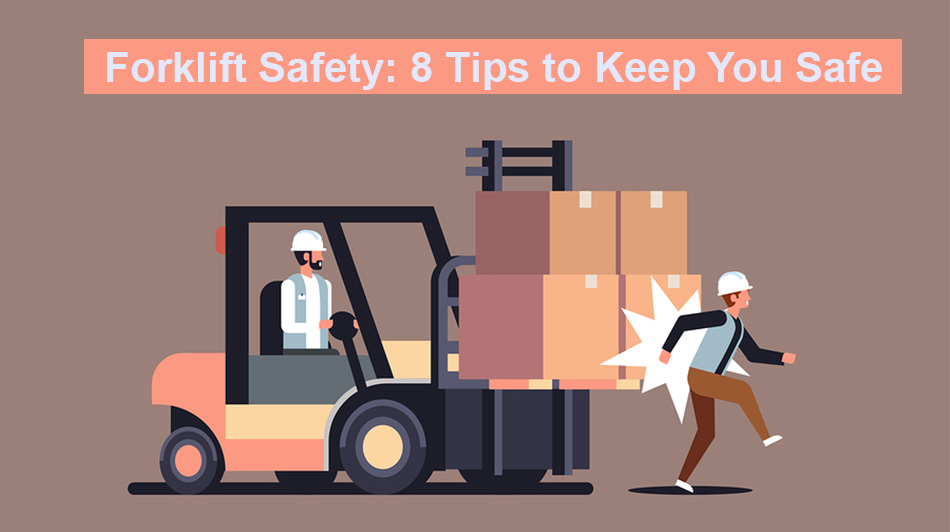Preventing Forklift Incidents and Accidents
Forklifts are very useful in warehouses, factory floors, docks, and other places where heavy loads need to be moved, but their one downside is that they can be very dangerous. They need to be operated very carefully to avoid incidents and accidents. Before we discuss how to prevent forklift incidents, we first need to discuss the main causes of such incidents.
The primary causes of forklift incidents and accidents include:
Poor Training of Operators
Many forklift incidents are a result of poor forklift training. Employees are usually taught the basic aspects of forklift operation, like driving and loading, but in many cases, the importance of safety is often understated during training. Additionally, forklift incidents are more likely to occur in cases where refresher forklift training isn’t provided, and operators are, therefore, unaware of hazards or even complacent.
Poor Maintenance of Forklifts
Many incidents and accidents happen because forklifts are in poor mechanical conditions. Forklifts that are not frequently serviced, those that are serviced by unlicensed mechanics, and those that are modified in ways that are not approved by the manufacturer are more likely to be involved in incidents and accidents.
Improper Loading or Reckless Driving
Forklift incidents are also commonly caused by improper loading and reckless driving. Forklift drivers looking to reduce their trips can decide to stack their loads much higher, and this could interfere with the stability of the machinery, leading to possible accidents. Operators may also drive the forklift faster than they are supposed to, which can significantly reduce their reaction time and increase the chances of an accident. If an unloaded forklift if driven too fast around a corner, it can easily tip over.
Bad Workplace Design
Incidents are also caused by poor workplace design, especially with regard to safety. Factors such as the size of the aisles, the presence of obstructions along pathways, steep floor gradients, and cluttered docking areas often contribute to the occurrence of accidents and incidents.
Operators injured in a forklift incident that was caused by poor workplace design may contact a personal injury lawyer and file a lawsuit against the company.
Steps to Prevent Forklift Incidents
Preventing forklift incidents requires a concerted effort from everyone at the work site, including the employer, the forklift operators, and the other employees working in close proximity to the machinery.
Employers should:
Provide up-to-date Refresher Training to Operators
Since employers are responsible for training operators, they should ensure that all new operators receive their forklift certification and that even the most experienced operators take refresher courses. This is necessary to ensure that the operators are aware of the latest safety standards and that they are well-versed with new forklift technologies and safety features.
Ensure Warehouses are Clean and Organized
It’s up to employers to make sure that warehouse floors are well organized and that there is enough aisle space for forklifts to move around. Preferably, forklift pathways should be separate from those used by pedestrians. The forklift lanes should be free of obstructions and debris.
Ensure that Forklifts are Properly Serviced and Maintained
Employers should also make sure that their forklifts are in optimal working conditions at all times. All forklifts should undergo routine servicing and maintenance. Damaged components should be replaced with genuine spare parts from dealers that are authorized by the manufacturer.
Invest in Safety Controls
Employers should outfit their warehouses with all the necessary safety controls and equipment, including warning signs, alarms, warning lights, and communication devices. The warehouses should be well-lit to increase visibility, and safety signs should be positioned along forklift lanes, especially around turning areas and intersections. Mirrors should also be used to improve visibility around corners.
Operators should:
Carry Out Checks Before Operating Forklifts
Operators should take a few minutes to visually inspect their forklifts before starting work. This is often referred to as a “pre-operational inspection”. A brief inspection of the machinery can help identify mechanical problems, and this can help prevent accidents. Operators can be taught to do basic mechanical checks to ensure everything is in order before they mount onto their forklifts.
Adhere to Loading and Unloading Procedures
Operators should stick to the loading and unloading procedures at all times. They should ensure that the loads are stable, well-centered, and properly secured at all times. They should avoid using forklifts to lift people. They should also avoid overstacking the loads.
Travel with the Forks as Low as Possible
Loads should be transported as low to the ground as possible. This rule should be followed at all times. Carrying loads at an elevated position can significantly reduce the stability of a forklift and cause it to tip over.
Avoid speeding
Operators should avoid speeding and reckless driving of forklifts. They should also remember to regulate their speed depending on conditions such as weather, floor gradient, or length of the aisle.




